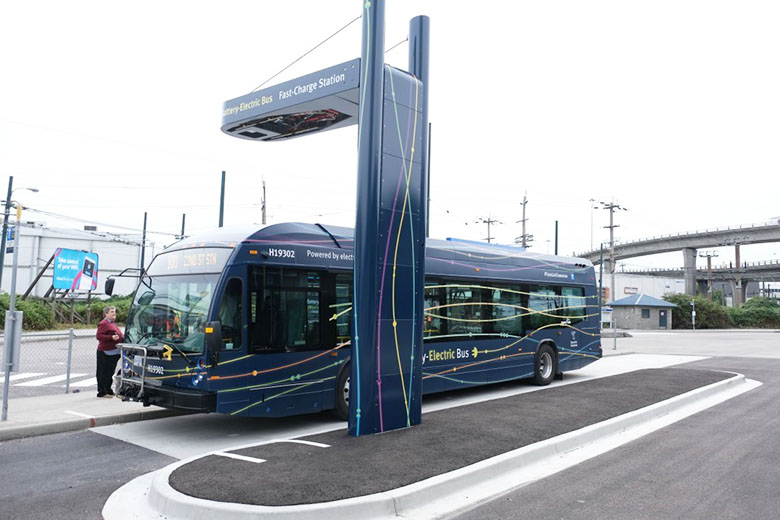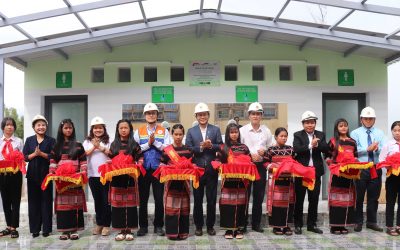
The Prime Minister issued new Decision No. 876/QD-TTg on July 22, 2022, authorizing The action program on green energy transition and reducing carbon and methane emissions from the transportation sector referred to as The green energy transformation action program.
- Green logistics – an important point for sustainable development
- What may you not know about the carbon credit market?
- Solar power is greening plastic factories
Green logistics – an important point for sustainable development
The green energy transformation action program aims to develop a green transportation system that will reduce net greenhouse gas emissions to “zero” by 2050. The program has established a roadmap for green energy transformation with each mode of transportation, including roadway, railway, inland waterway, maritime, airway, and so on.
The green energy transformation action program for the transportation sector
The roadway, period 2022 – 2030, will promote the production, assembly, import, and conversion of the use of road motor vehicles using electricity; expanding mixing, using 100% E5 gasoline for road motor vehicles; developing charging infrastructure to meet the needs of people and businesses; and encouraging new and existing of bus stations and rest stops to convert according to green criteria. By 2040, it will progressively halt the manufacturing, assembly, and import of fossil-fuel automobiles, motorbikes, and motorcycles for domestic usage. The objective is for all motor vehicles and motorcycles on the roadway to be powered by green electricity and energy by 2050.
Between 2022 and 2030, there will be pilot studies on the use of green electricity and energy railway vehicles on current railway lines; develop a plan and invest in a roadmap to replace expired old railway vehicles with ones that can be converted to green electricity and energy; and encourage the conversion of station loading and unloading equipment that uses green electricity and energy. By 2050, the program seeks to convert all locomotives, train carriages, and all fossil fuel equipment at stations to green electricity and energy.

Reducing greenhouse gas emissions in the transportation industry
The roadmap for green energy transformation with modes of transportation such as inland waterway, marine, and airway also establishes targets of 100 percent vehicle conversion to green electricity and energy, such as:
- Inland waterway: By 2040, all newly built inland waterway vehicles will utilize green energy, and all newly built inland waterports will meet the green port criteria. By 2050, all vehicles and equipment at ports and inland waterways will be powered by green electricity and energy.
- Maritime: By 2050, all ships operating on domestic routes will be powered by green energy.
- Airway: By 2040, all vehicles operating in the airport zone will be converted to utilize electricity. It will revolutionize 100 percent green energy, sustainable airway fuel for airplanes, to reduce greenhouse gas emissions by 2050.
Transportation is a major energy consumer in Vietnam and a significant source of greenhouse gas emissions; it emits around 45 million tons of CO2 equivalent in 2019 and is expected to increase by an average of 6-7 percent per year, reaching roughly 90 million tons of CO2 by 2030. As a result, the green energy transition, as well as reducing greenhouse gas emissions from the transportation industry, are thought to play an important role in the roadmap for Vietnam to achieve the goal of reducing greenhouse gas emissions as well as carbon neutrality by 2050, as committed by the Prime Minister at the COP26 Conference.
Focus on urban areas: Achieving 100% green transportation by 2050.
It is anticipated that by 2050, around 70% of Vietnam’s population will be concentrated in urban areas. As a result, the shift to green transportation in metropolitan areas requires additional attention. In this area, the Program has set a goal of 100% replacement buses and new investments utilizing green electricity and energy by 2025. From 2030, the percentage of cars that use green energy will climb to at least 50%, and at the same time, all new taxis will use electricity and green energy. By 2050, all buses and taxis will utilize this energy.
See the full text of Decision No. 876/QD-TTg approving The action program on green energy transition and reducing carbon and methane emissions from the transportation sector.
See more
- Circular economy development – An inevitable trend for green growth goal
- The United Nations has called for increasing investment in renewable energy
- Vu Phong Energy Group is determined “Strengthening transformation – Reaching the masses”
Vu Phong Energy Group









